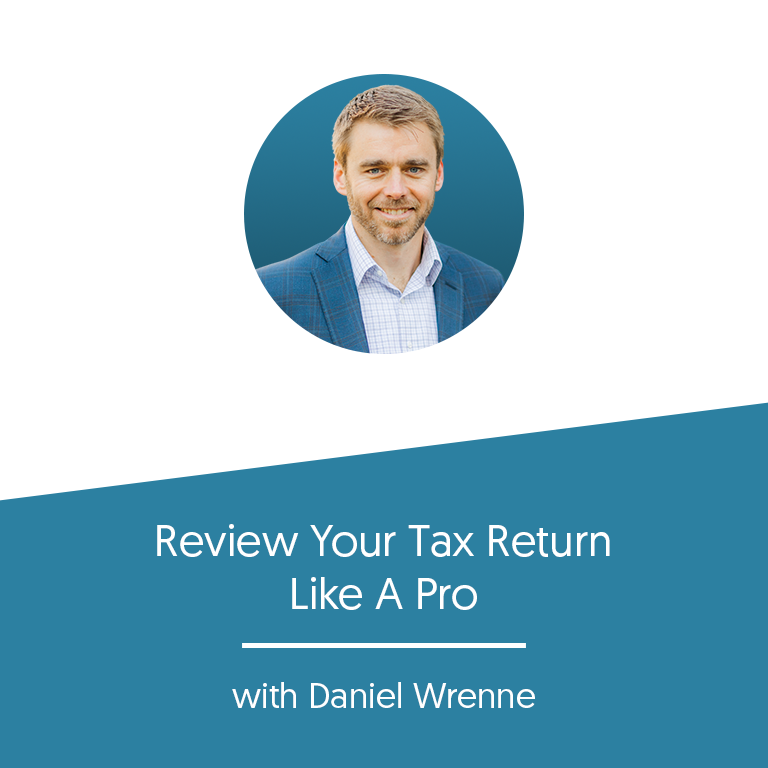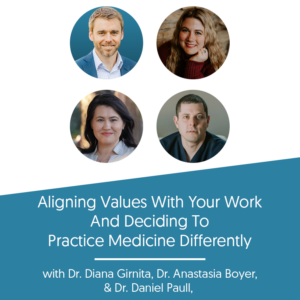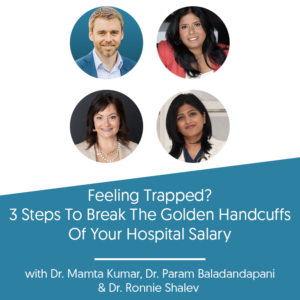Join Daniel Wrenne, your go-to financial advisor for physicians, as he navigates the nuances of tax season in this episode of Finance for Physicians. Daniel breaks down the essential steps for physicians to review their tax returns effectively.
In this insightful discussion, Daniel covers crucial topics, including spotting common errors like missing dependents and ensuring accuracy in income reporting, especially for those with multiple W-2s. Gain valuable tips on optimizing dividend portfolios, understanding IRA distributions, and navigating the complexities of capital gains and losses.
Whether you’ve already filed your taxes or are gearing up to do so, Daniel provides actionable insights to empower physicians in taking control of their financial well-being. Don’t miss this opportunity to master the art of decoding your finances and ensuring a secure financial future.
Tune in now for a comprehensive guide to decoding your tax return!
P.S. We value your opinion! Share your thoughts and insights with us. Your feedback helps us improve and tailor our content to your needs. Click here to give us a piece of your mind.
Links
Full Episode Transcript:
Daniel: What’s up guys, as I’m recording this it is uh, towards the end of tax season and so I wanted to talk briefly about a question that commonly comes up and I would encourage all of you to think about and that is, How should I be reviewing my tax return? What should I be looking for? Are there specific things to look for?
So What I’m gonna do is go through very very high level like the basics Just the preliminary stuff if you like this sort of idea the concept of doing this I can get into a little bit more detail But I’ll start with like the basics like The form 1040, and I’m going to reference it so you can, you can look at your actual 1040, pull it out and review it yourself.
I’ll just be focusing in mainly on the first page of stuff today. and so back to the question. I think the short answer is for sure you should be reviewing your tax return and there are all kinds of Mistakes that happen and things to look for which i’ll talk about today I work with families one on one and when we In our work, we look at clients tax returns, that even if a CPA is preparing them just to kind of make sure like a quick skim to make sure, everything looks good.
And it’s, I would say like maybe 10 to 20 percent of the time we find errors. and it’s usually like a miscommunication or, you know, just something. you know, mistaken, or whatnot, but, it’s definitely worthwhile to do. oh, another thing, if you’ve already filed your tax return, it’s okay.
preferably you ask your accountant or if you’re doing it yourself, you review this before it gets filed. So you can ask your accountant to provide a draft return to review before they actually formally file it. That’s the best time to review. But even if you’ve already filed it, you can still, you know, worst case scenario amended.
It’s not a huge deal. amend it and correct it essentially with the IRS. And then they’ll, you know, settle up with you, whether you owe money or get refund from that. and you can actually do that up to three years, three prior years, if you find mistakes. So it’s worthwhile to review it, even if you filed it.
and if you see a mistake, it’s worthwhile looking at. even older returns than just this year. So, if you have your tax return, pull out the 10 40. So that’s just the, this main, it’s actually two pages, but I’m just going to talk about the first page. So it’s forum 10 40. it’s the, the main, you know, it’s where all the tax stuff comes together.
And you see, you know, how it’s coming through. So, I’ll talk through, like I said, the first page and throw out some things to look for. The very beginning section of it, you’ll see like, name, spouse name, dependents, all that stuff. The one simple thing to look for, and this may sound stupid, but like, make sure everybody’s in there.
I have… On a couple of occasions, found where accountants missed a dependent, like say you had a new child and they just weren’t aware of it. And like I said, it was a communication issue. and so they just didn’t put the new baby in there. And that can, in some cases, be a pretty substantial tax difference, like, to your benefit.
So you want to make sure, for sure, your spouse, you want to make sure your dependents are all listed in there correctly, and that’s important. If you go down to the income section, which is, like, right in the middle of the page, so 1A, total amount from form W 2, box 1. So it’s, it’s a quick check, I think, to make sure all, especially if you have multiple W 2s.
If you just have one. And this is pretty straightforward. It’s just, should be the number from your W2, but some of the families we work with have like six or seven W2s. And if that’s you, you definitely want to make sure every year that all of them are in there. Cause I have seen this mistake made multiple on multiple occasions where just a W2 was forgotten or missed or mistake mistakenly overlooked or whatever.
So it’s worthwhile to double check this number to make sure this W2 number lines up with your total W2 amounts. Make sure nothing’s missing. The next line item I would point out is 2A, so that’s tax exempt interest and then 2B is taxable interest. here you want to make sure that there is something listed there.
Especially, now if you have no cash or like, if you have very little cash in your savings accounts, then there’s not going to be anything there. but if you have a fair amount of cash, like 10, 000, maybe even 5, 000 or higher, there should be a number here. And if there’s not a number here, either there was a mistake and it wasn’t reported or you’re not earning any interest and you should be.
So a lot of these banks are not paying interest, even though some other banks are paying interest. So it’s worthwhile to check to see what your interest actually was. and like I said, if it’s zero, you want to check to see what your actual interest rate was or make sure it was actually reported in the first place, under.
To be in taxable interest now tax exempt interest that can come from like Certain like municipal bonds or stuff like that. So that’s kind of a different category I’m not going to go into detail on that today and then 3a qualified dividends and then 3b ordinary dividends That’s a good one to look at like you want to make sure you don’t have like Too high of a percentage of ordinary dividends.
Like if you’re getting a whole bunch of ordinary dividends, or all of your dividends or ordinary dividends, they’re less tax efficient. And so typically that’s a sign of like owning an inefficient tax wise investment in your brokerage account. And so I’d be asking some questions if my ordinary dividends were, you know, say 60 percent or higher of the.
Total dividends that I had. and so you want to look at that ordinary dividend, to qualified dividend ratio, and make sure ideally all of your dividends are qualified. Usually you can’t get to that point, but ideally you want to have a higher percentage of qualified dividends. I think 70 percent is a pretty good target where 70 percent of your total dividends are qualified.
Qualified dividends have a slightly better tax treatment. So you want to ideally have all of your dividends be qualified. And if they’re not the majority, then you want to start looking at your brokerage account or asking them some questions about what’s going on there and what you’re investing in for a, so for a is probably the most common mistake.
We see. So, IRA distributions and then for B is taxable amount. This is where the backdoor Roth IRA comes through. And so most common mistake we see is that number in four B is. In 2022 numbers, 12, 000. That’s a sign that it was incorrectly reported. if your goal is to do the backdoor Roth IRA, really that taxable amount number should be zero or very close to it.
And if it’s not, there’s probably something wrong that’s happening. And so if you do it. Correctly, like it should net out to very little, like maybe a few dollars or zero taxable, income. On the other hand, if it shows 12, 000, that’s for sure a mistake. and if it’s larger than 12, 000, you want to dig into that and figure out what’s going on.
That’s a sign that there could be a problem. And then seven. So capital gain or loss. this is another one that can tie to your brokerage account, your investment accounts. that’s where it all comes through on your activity from your brokerage accounts if that number, in line seven is I guess for 2022 if it’s really you know, any positive number, I would be surprised unless you had some sort of unique transaction. Like this can also be real estate transactions or, um, business transactions that trigger capital gains.
But if you don’t have any of those things and you just invest in a brokerage account, really, you shouldn’t have had capital gains in 2022 just because of how the year played out. and ideally it should be, you know, especially if you’re in a high tax bracket, if you’re trying to do tax loss harvesting.
and you’re in a higher tax bracket, which typically amplifies the benefit of that, that number should be negative 3000 because that’s the max you’re allowed to take of a loss to offset ordinary income. So that’s the ideal number. if you’re trying to do tax loss harvesting, that’s typically the number you’ll want to shoot for is negative 3000 there.
If it’s higher than that, either something unique might have happened in your situation. I would want to understand what that was, or there could be, maybe your investments or triggering more tax than is necessary. So you want to dig into that if it’s, if it’s some other number. The last one I’ll point out is on line 12, standard deduction.
Or itemized deductions, the, the most common mistake I see here is, people either doing it themselves or the accountant mistakenly assumes or considers it, the standard deduction, which is just like the default everybody gets when in reality they should have done itemized deductions. So the most common itemized deductions are your mortgage interest up to a certain threshold, income taxes and property taxes paid.
And that caps out at 10, 000 right now under current tax law. and then charitable giving. So the combined of those three numbers, if the total is greater than your standard deduction, then you need to itemize deductions. So it’s worthwhile to check on that number, make sure you understand what your total is and compare it to what the standard deduction is just to make sure it’s correct.
I’ve seen multiple occasions where, like I said, the standard deduction was used when in reality. You should have been itemized. Okay, so that’s the first page. Um, I wanted to keep it simple for today Let us know if you want to dig in further And good luck reviewing your tax return










